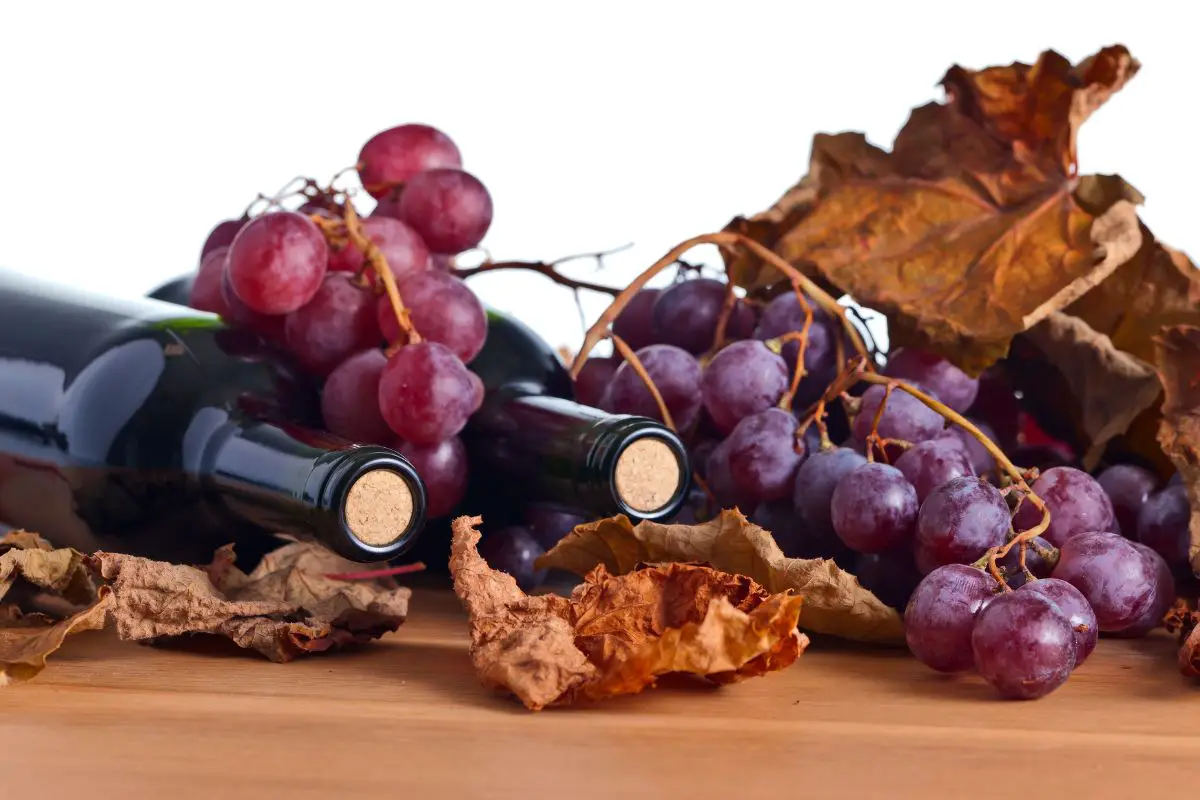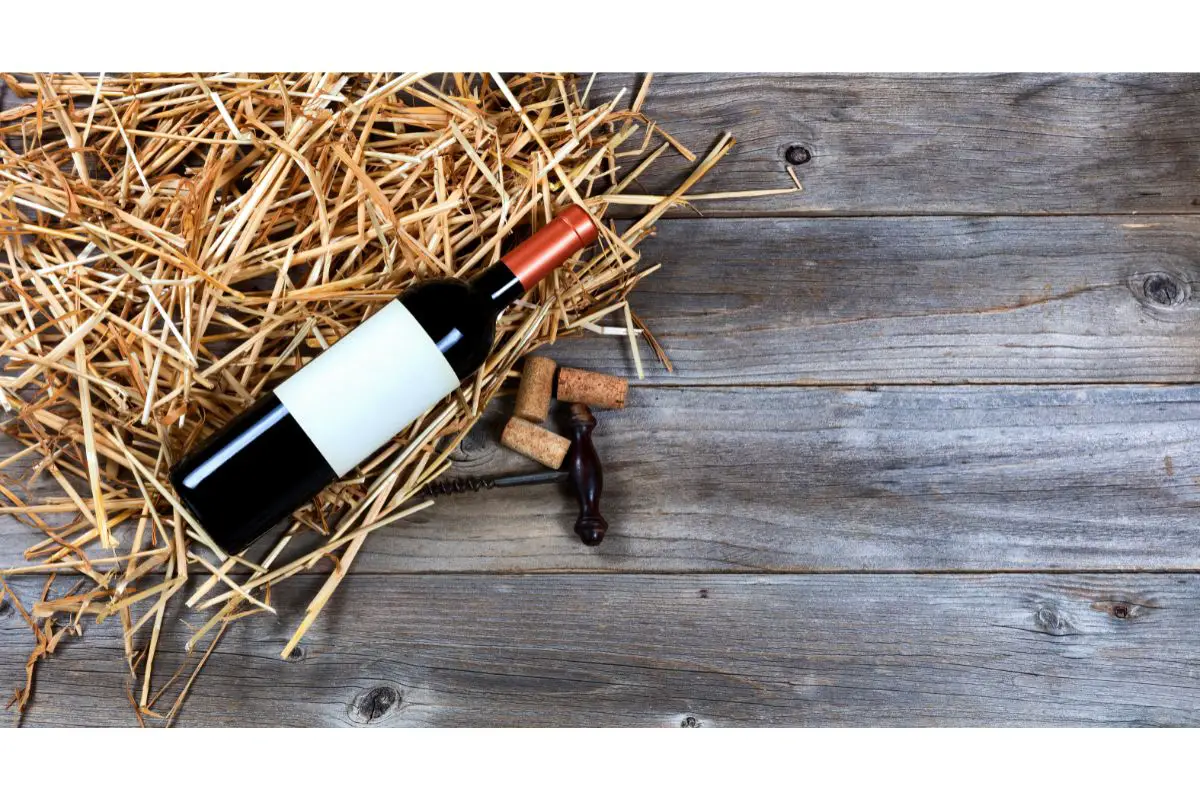Sometimes you come across a recipe that calls for wine to be added to the dish. Perhaps you are wondering why you would do this because alcohol evaporates during the cooking process. However, the flavor still remains and it can turn a good dish into a great one.
Many recipes call for a dry red wine to be added. In this article, we will take a look at how dry red wine is produced and which varietals are the best to use in cooking.
How is Dry Red Wine Produced?
When you go to the store, you will find many shelves devoted to red wine. However, not all of them are dry. Some will be off-dry and a few, sweet. If you don’t know much about wine, you will need to read the label on the bottle or look up the varietal on the web. It won’t take too long for you to learn which wines are dry and which aren’t.
Wine is thought of as being dry if it has 1% residual sugar or less. Residual sugar is the amount of sugar left in the wine after it has been fermented.
To understand how wine becomes dry, you need to understand the fermentation process. First, the grapes are harvested and crushed, and then they are fermented with yeast. During this process, the yeast eats the natural sugars of the grapes and turns them into alcohol. If the winemaker wants a sweet wine, he or she will stop the fermentation process before the yeast has eaten all the sugars. If a dry wine is wanted, the fermentation process continues until the residual sugar falls between one and two grams per liter. The alcohol by volume (ABV) is usually between 12 – 14% for dry red wines.
Which are the Most Popular Dry Red Wines For Cooking?
Wine has been used in cooking for thousands of years to add flavor and depth to recipes. However, which are the best dry red wines to use when cooking your meal? It won’t surprise you to learn that different wines complement different dishes. We’ll take a look at four dry red wines that are an asset to various recipes.
Cabernet Sauvignon
Cabernet Sauvignon is arguably the most popular red grape variety the world over. It is often on menus in restaurants where it can be the house wine and it can be the choice of dry red wine in a bar.
The Cabernet Sauvignon grape is the product of two varieties of grape, Cabernet Franc and Sauvignon Blanc. It originated in Bordeaux, France but is now grown the world over.
Cabernet Sauvignon is dry and full-bodied, with high acidity and moderately high tannins. It has an ABV of between 13 – 15% and flavor notes of black cherries and blackcurrants, with vegetal notes of green pepper and spice notes of vanilla if it has been oak aged.
Cabernet Sauvignon goes well with red meats like steak, lamb, and venison. It is a good choice if you are braising red meat, especially beef. As the meat softens, it absorbs the wine’s flavors and you end up with a delicious dish.
You may be surprised to learn that you can even make a sorbet using Cabernet Sauvignon, especially one with dark fruits.
Pinot Noir
It is debatable where Pinot Noir originated but it has been grown in the Burgundy region of France for centuries. However, it is now also grown in New World countries such as Australia, Argentina, and New Zealand.
Pinot Noir is very different from Cabernet Sauvignon as it is light to medium-bodied, has low tannins, and is very fruit-forward. It has an ABV of between 12 – 15%. When it comes to flavor, Pinot Noir has hints of pomegranate, cherries, and berries.
Pinot Noir pairs well with semi-soft and stinky cheeses, fatty fish, duck, and anything with mushrooms. Pork with mushroom sauce is a good choice.
Pinot Noir works well in a red wine sauce as it is not too overpowering. You want the meat to be the star of the show. You can pour the red wine sauce over duck or steak or even make pasta sauce with it. Pinot Noir is also a good addition to beef stews, in particular Boeuf Bourguignon.
Chianti
Chianti originated in the Tuscan region of Italy and is made from the Sangiovese grape variety. It is medium-bodied, high in acidity, and has moderately high tannins. It has around 12 – 13% ABV. The flavor depends on how long it has been aged. Chianti has simple fruit flavors if it is young but these become more complex as it ages. It becomes more fruit-forward with notes of plums and cherries. It also becomes herby and smokey.
Chianti pairs well with tomato-based sauces, meaty pasta, steak, pepperoni pizza, and many different types of cheeses.
This wine can be added to a tomato-based beef stew or tomato pasta dish. It gives them a bolder and more complex flavor. Add the wine to French onion soup or a mixed mushroom soup. They will be delicious.
Merlot
Merlot grapes originated in Bordeaux, France but they are also grown in Italy and now in the US, where Merlot has become very popular.
This wine is medium to high-bodied, has moderate acidity, and soft, but present tannins. Its ABV is 13.5 – 14.5%. It tastes predominately like berries including plums, blackberries, and black cherries.
Merlot pairs with cheeses such as Cheddar and Gouda, poultry, pizza, and meats such as pork and veal.
Make a red wine sauce with Merlot and pour it over roast duck. It also goes well in a spaghetti sauce, coq au vin, or a pork chop with red wine and shallot sauce. It also goes well in desserts such as poached pears.

Why Should You Add Dry Red Wine To Your Recipe?
Some people might not be aware that wine has been added to their dish when in a restaurant unless it’s in the title like coq au vin. So, why is it a good idea to add dry red wine to your recipe? Here are the reasons.
For Marination
One of the best ways to add flavor to your food is to marinate it for a couple of hours or even longer. You can marinate any type of food, be it meat, poultry, fish, vegetables, or even tofu. A lovely dry red wine marinade for steak would include red wine, garlic, soy sauce, lemon juice, Worcestershire sauce, Dijon mustard, honey, cumin, coriander, and olive oil.
Because wine has acidic properties albeit, in different levels, it helps to tenderize meat. This is a big advantage, especially with red meat.
Another plus of marinating food in dry red wine is that it boosts the other flavors in the marinade.
For Enhancing the Liquid
If you are cooking a dish such as boeuf bourguignon or coq au vin, adding red wine adds a depth of flavor, adds more complexity, and elevates the dish to another level. Don’t worry, you won’t get intoxicated as the alcohol burns off.
What To Remember When Cooking With Red Wine
The most important thing to remember when cooking with red wine is that its flavors will influence your dish so you will have to choose a wine that you believe will complement the dish.
The easiest way to do this is to imagine which wine you would drink with the meal. If you can ascertain this, then you should be able to work out which wine would be best to add to the dish. For example, if you are cooking a hearty beef stew, you might want to use a full-bodied dry red wine like Cabernet Sauvignon. However, if you are making a tomato sauce with red wine for pasta, you would want to choose a lighter wine such as Pinot Noir.
Be careful if you are using wine with high tannins. High tannins leave a bitter taste in your mouth and if you use too much of it in the dish, the sauce could also be bitter. This doesn’t mean that you can’t use a dry red wine with high tannins if it has the flavor profile you are looking for. Just be careful with the amount you use.
This brings us to the next point, the amount of wine you put in the dish. We don’t advise that you put in a whole bottle even though the alcohol will burn off. Nevertheless, this amount of wine will overpower the other flavors and all you will be able to taste is the wine. You want wine to add flavors not become the predominant flavor. It should complement everything else in the dish.
Another thing to consider is the quality of the wine. If you use cheap wine, it’s not going to get any better if you use it in a marinade, sauce, or add it to a stew. If you don’t want to drink the wine, then don’t use it for cooking purposes. That doesn’t mean that you have to buy the most expensive wine out there and allow it to evaporate away. A medium-priced wine that you enjoy drinking will suffice.
Don’t use old wine. By this, we don’t mean vintage wine but rather, wine you opened a few days ago and hadn’t got around to drinking yet. This is because wine starts oxidizing as soon as the bottle is opened and therefore, the flavor profile begins to change. The wine can easily become bitter which would transfer to your food if you used it in a dish.
Add the wine slowly to allow the flavor to develop properly and to stop strong flavors from overpowering the dish.
Cook the wine on low heat. If you cook it on high heat, it can make the dish bitter. It will still evaporate on low heat.
Cooking with Dry Red Wine – A Great Combination
We hope that this article has introduced you to a great way of cooking and that you will want to try some recipes using dry red wine. This type of wine can be used in a marinade, in a stew, or in a sauce to give a complexity of delicious flavors. Experiment with different wines to see which goes best with the food you enjoy.


